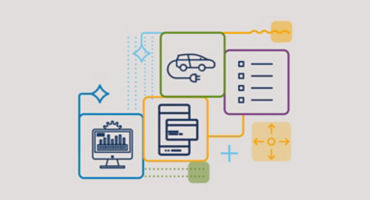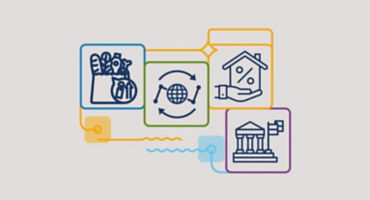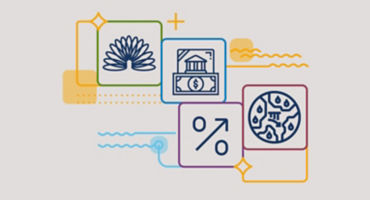As foreshadowed by US Federal Reserve (Fed) Chair Jerome Powell in his recent congressional testimony, as well as by other Fed officials, the Federal Open Market Committee (FOMC) yesterday accelerated the timeline for tapering its large-scale asset purchase program. The Fed’s monthly purchases of US Treasuries and agency mortgage-backed securities (MBS) will decline at a faster pace over the next few months, before coming to an end in March 2022. The culprit: rising inflation.
US inflation has been running persistently higher than both the Fed’s forecasts and its target range and has shown signs of broadening out across more goods and services. In response, the FOMC increased its inflation forecasts while also decreasing its growth outlook, as labor shortages and supply-chain bottlenecks have created greater inflationary pressures than the FOMC previously anticipated. The mounting inflationary risks also led the median FOMC participant to now expect the FOMC to hike interest rates three times in 2022 and three times in 2023. The US Treasury yield curve flattened following the release of the FOMC’s revised summary of economic projections, as the front end of the curve moved higher.
When will the Fed start reducing its balance sheet?
While not an imminent risk, market participants will eventually turn their attention to the timing of the Fed’s upcoming reduction of the size of its balance sheet (i.e., no longer reinvesting the proceeds of maturing US Treasuries and agency MBS or even outright selling such securities). During the rate tightening cycle that commenced in 2015, the Fed waited until after raising the fed funds rate to 1% to begin paring back its balance sheet. If it follows a similar playbook this time around, the Fed could start to wind down its balance sheet by early 2023.
What about the Fed’s “terminal” fed funds rate?
Notably, in its updated summary of economic projections, the Fed did not alter its longer-term fed funds rate projection (its terminal rate) from 2.5%. In a recent Fed survey of investment managers, I responded that I believed the Fed’s terminal rate should be 1.75%. This is the rate at which I think the US economy would be close to full employment with stable inflation. I suspect the Fed will likely be able to stay “on hold” at that point, which would be a much lower terminal rate than in past hiking cycles.
COVID still a risk to future policy direction
The Omicron variant of COVID-19 has introduced greater uncertainty to the US (and global) economic outlook, with much still unknown at this juncture. For example, the implications could vary significantly, depending on the variant’s transmissibility, vaccine efficacy against it, and other factors. The information we have now points toward Omicron already being widespread globally, with meaningfully higher transmissibility than the Delta variant (also still circulating). On the other hand, vaccine makers have indicated that a new variant-specific version of the vaccine could be widely available in as little as six months (including time required for regulatory approval and mass distribution).
I am closely monitoring developments on this front to be able to reassess the potential economic and market implications as needed. As of this writing, investor concerns around the Omicron variant are reflected in lower crude oil prices and the collapse of front-end inflation breakeven rates, although the Fed appears determined to continue on a path toward policy normalization (for now anyway).
Investment takeaways
I still believe the US Treasury curve could flatten from here and I find the 20-year point on the curve most attractive in the wake of its recent underperformance versus the 30-year Treasury. At some point, if bond yields climb higher, I would expect buyers to step into the Treasury market in larger numbers, particularly given the appeal of US Treasury yields to overseas investors on a currency-hedged basis. The US rates market has proven surprisingly resilient to date, given the relative strength of economic data and recent upside inflation surprises.








